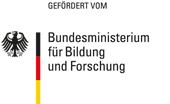Plastic Additive Bisphenol A: Toxicity in Surface- and Groundwater Crustaceans GroundCare | Publikation | Grundwasser
Vorschau
Bisphenol A (BPA) is being considered by the European Union as a substance of very high concern, occurring worldwide due to its wide application in many plastic products, building materials, coatings and epoxy resins. The toxicity of BPA in groundwater invertebrates is insufficiently understood. Both acute (24 h) and chronic (28 d) toxicity was compared in Daphnia magna and ecologically important crustaceans in surface water (Gammarus fossarum, Eucyclops serrulatus) and groundwater (Niphargopsis casparyi, Proasellus slavus). Survival and spontaneous locomotory activity was recorded in real-time in the Multispecies Freshwater Biomonitor (MFB) and the new Microimpedance Sensor System (MSS) for Meiofauna. The benthic copepod E. serrulatus was the most sensitive test species, followed by the groundwater species N. casparyi and P. slavus with G. fossarum and D. magna being the least sensitive species in acute tests. In chronic exposures the most sensitive species was P. slavus, whereas the amphipods and D. magna showed overall similar sensitivity. G. fossarum showed slightly more sensitive behavioral responses compared to N. casparyi, while D. manga behavior was affected by an age-dependent increase, masking potential negative effects of BPA on locomotory activity. Feeding activity of G. fossarum was more sensitive than molting and reproduction of D. magna. G. fossarum can be recommended for toxicity evaluation of groundwater habitats, as no standard test procedures and toxicity data for groundwater species are available. The organisms might also be used as biomonitors for landfill leachates, wastewater treatment plants, sewage plants and paper recycling plants.
Zum Produkt
Ansprechperson
Dr. Almut Gerhardt
T. +49 7531 9765096
M. info@limco-int.com


 English
English



